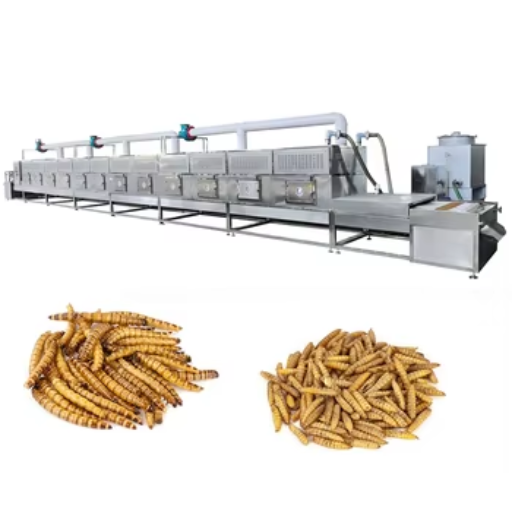The invention of microwave technology for drying black soldier fly larvae is an epoch-making breakthrough in waste management and sustainable food production. What it does is not only meet the increasing demand for efficient waste management but also make larvae nutritionally rich enough for them to be used as feeds and other things. This blog will discuss the advantages and uses of this machine, its working principle from a scientific point of view, and how it can affect agriculture and the environment. In our company, we will explore this revolutionary device that could transform food production systems, thereby promoting sustainability.
What is a black soldier fly larva microwave drying machine?
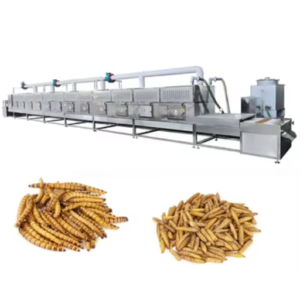
Image source: https://www.alibaba.com/
A microwave drying machine for black soldier fly larvae is a unique device designed to dry black soldier fly larvae using microwave technology. This machine emits microwaves that heat the larva evenly and fast, thus enabling it to remove moisture without breaking the protein-rich larva. Therefore, this procedure not only helps conserve essential nutrient components but also significantly shortens the time used to dry them compared with traditional techniques. As such, this technology encourages sustainable production of feeds for animals while minimizing energy use and waste generation.
Understanding microwave drying technology
Microwave drying technology exploits microwave energy by making materials dry out promptly, as happens with maggots of black soldier flies (Hermetia illucens). It is done by quickly heating the substance as a result of water molecules absorbing microwave energy. This method has several benefits, such as speedily drying large amounts of foodstuff that can be very vital, uniformly removing moisture from products, and preserving valuable nutrients. Furthermore, microwave drying uses less energy and is more eco-friendly. These sustainable practices in food production support good quality larvae for different purposes, such as animal feed, when this modern invention is used.
Why use an industrial microwave to dry BSF larvae?
Many solid reasons exist for using an industrial microwave to dry black soldier fly (BSF) larvae. For one, when compared to conventional drying techniques, industrial microwaves allow for quicker drying cycles, reducing operational costs and enhancing productivity. Such efficiency is made possible by uniformly spreading the heat across the whole item, thus avoiding its overheating or getting damaged because of excessive input about temperature. In addition, industrial microwaves are designed for use in large-scale operations where there is often a need for continuous operation; hence, they are essential in commercial feed manufacturing. Besides, they save energy, reduce environmental impacts, and meet sustainability objectives. In brief, incorporating industrial microwave technology into BSF larvae drying ensures productivity and eco-friendliness and maximizes final product quality.
Comparing traditional methods with microwave dryers
Several differences emerge when comparing traditional drying methods to microwave dryers. Conventional methods such as air drying or sun drying can take many hours to days, often causing inconsistency in moisture levels and possibly loss of nutrients due to prolonged exposure to heat and UV rays. However, unlike the conventional ones, microwave driers work within minutes only, thus guaranteeing a more consistent moisture content in the larvae. In addition, this process is speedy because it preserves valuable nutrients while minimizing risks of mildew or rotting that may be observed in an extended period of traditional drying techniques. On the other hand, unlike conventional drying, which calls for bigger spaces and more manual attention, microwave dryers make things easier by allowing automated processes within a small space for efficiency. This implies that microwave drying has speeded up the processing of BSF larvae besides reducing nutrient loss and environmental pollution compared with other commercial drying systems.
How does a black soldier fly larva drying machine work?
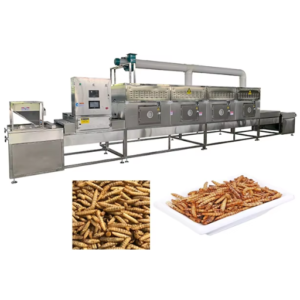
This machine uses microwave technology to dry the larvae of a black soldier fly larva. Internal heating is generated through microwaves that heat water within the larvae, quickly vaporizing it. This method of heating ensures that drying is uniform and controlled, so quality nourishment, in any case, remains while effectively restraining microbial growth. For example, moisture sensors and automatic controls often accompany it, enabling accurate monitoring and adjustments during drying cycles. Moreover, compared with traditional methods, this development speeds up drying and reduces the energy used.
The drying process is explained step-by-step.
- Preparation: Cleaning and checking for contaminants to ensure the black soldier fly larvae are fresh from harvest. This might involve rinsing them off to get rid of any organic residues.
- Loading: The next stage is loading the cleaned larvae onto a microwave drying machine. Proper spacing between the larvae is essential for uniform drying, allowing the microwave to penetrate evenly.
- Moisture Measurement: Before drying the larvae, moisture sensors are applied to obtain a baseline measurement of their moisture content.
- Heating: To heat the insects, microwaves emitted by this machine interact with their bodies, and their water molecules quickly turn into steam, reducing their moisture.
- Monitoring: The machine’s automatic control systems maintain temperature and humidity levels throughout its operation. Adjustments are made when necessary to maintain optimum conditions.
- Cooling: After attaining the required moisture levels, switch off the microwave and leave the insects inside for some time so they can cool down without causing condensation.
- Final Assessment: The final determination of moisture content in dried larva samples aims to ensure they meet storage specifications and shelf life criteria.
- Packaging: Larvae have been cooled down enough after confirming optimal moisture concentration. Hence, they can now be packed in air-tight cases, preventing any reabsorption or stale smell emanation due to water vapor.
The step-by-step process optimizes drying efficiency and maintains the insects’ nutritional value, making it suitable for commercial application.
Inside the microwave drying machine: Key components
- Microwave Generator: This part produces waves in the oven that move through the object during drying. It usually consists of a magnetron, which efficiently converts electrical energy to microwave energy and provides effective heating.
- Waveguide System: This system conveys these waves from the generator to the drying chamber, thus ensuring that energy is spread evenly. This ensures that every area of the material is suitably exposed to microwave radiation.
- Drying Chamber: The heart of the microwave dryer, where material is placed for drying purposes, is called a drying chamber. In most cases, it constitutes materials that can survive high temperatures and maintain controlled conditions to promote appropriate drying conditions.
- Cooling System: Once the cycle ends, the cooling system helps decrease the temperature of the dried product, thereby preventing damage from condensation. Often, fans and ventilation systems inside form part of this system and help retain the output’s quality.
-
Control Panel: On this platform, operators can set different parameters regarding time, temperature, and moisture content throughout the drying process. Modern machines have automated controls and sensors that enhance precision while using them.
Understanding PLC and its role in microwave sterilization
Microwave sterilization processes, however, have a critical role in using Programmable Logic Controllers (PLCs) as they enable precision control and automation of equipment. These PLCs monitor parameters such as time, temperature, and power levels to ensure effective sterilization while managing microwave generators. Furthermore, these PLCs help maintain optimal conditions within the sterilization chamber by integrating sensors and feedback mechanisms that enhance efficiency and safety. Custom cycles are permitted by their flexibility, enabling them to be programmed for different materials or applications, which results in better product consistency and reliability. Further, through troubleshooting and diagnostics a PLC provides, the operational standards are maintained within microwave sterilization systems.
What are the benefits of using a microwave black soldier fly larvae drying machine?
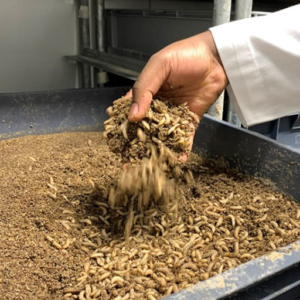
Microwave drying cabinets for larvae of black soldier flies have many merits. For example, they cut down the time required to dry them by a considerable amount compared to traditional means thus hastening their processing and improving efficiency. Microwave technology also ensures an even heat distribution throughout the chamber to minimize insect overheating or damage. Besides, controlled environmental conditions limit the wastage of nutrients, and thus, product quality is preserved in terms of protein and fat content. Finally, their smaller size and lower power consumption make them more cost-efficient than other options available, which can save money on electricity bills while being eco-friendly regarding larvae processing.
Efficiency and short drying time
The efficiency of drying black soldier fly larvae is significantly increased by using microwave drying technology. In contrast to other methods that may take several hours or even days, microwave drying can reduce this time to a few minutes. This process dries fast because microwaves can interact directly with the grubs, making any moisture in them disappear quickly. Furthermore, it saves energy for producers and companies, allowing them to reduce operations costs, thus enabling it to be a more advantageous alternative in an increasingly competitive field like the insect protein industry. Consequently, productivity is improved due to shorter periods spent on drying while their final products remain unaffected by the quality after saving electrical power in the food processing business.
Improved drying and sterilization processes
Black soldier fly larvae can be dried using microwave technology. It is an efficient drying method which also prevents spoilage. This makes microwave heating a better choice for ensuring the safety and quality of BSFL intended for human consumption. It has a second action: drying off the products plus sterilizing them, which minimizes the chemical treatments needed to maintain product wholesomeness. This also helps to avoid cross-contamination, thus making the processing system cleaner. Therefore, Microwave drying offers both solutions in drying and sterilization as it adheres to health standards stipulated in the food and feed industry.
Enhanced quality and consistency of bsf larva products
Microwave drying methods enable better quality and reliability of products made from larvae of the black soldier fly (BSF). When the insects are subjected to even microwave power distribution, dryers can maintain uniform moisture content within a patch; hence, their products become compliant with texture and nutritional requirements. Furthermore, shortening the drying time curtails nutrient losses that might compromise the end product’s protein contents and fatty acids profiles. This dependability not only meets customer demands but also corresponds to industrial endorsements and governmental laws’ needs, forming some sort of norm for first-rate insect meal and feeding on new markets.
What are the applications of black soldier fly larvae drying equipment?
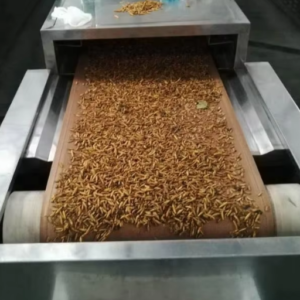
Drying equipment for black soldier fly larvae is widely used in the food and feed industries to process insect-based products. These could include manufacturing higher protein content animal feeds, organic fertilizers, and high-nutrient snacks for human consumption. Furthermore, it facilitates the conversion of organic waste into valuable protein sources while at the same time maintaining the safety and shelf life of such final products, thus playing an important role in waste management. Accordingly, it can be employed in diverse fields such as aquaculture, poultry, and pet food to promote sustainable agriculture.
Industries utilizing bsf larvae for insect protein production
The high protein content of black soldier fly (BSF) larvae has made them increasingly popular in various industries as a raw material. The major industries that have embraced the use of BSF larvae for insect protein production include:
- Aquaculture and Poultry: Due to their nutritional value, BSF larvae are primarily consumed by fish farmers and the poultry industry as an ideal source of protein, promoting fast growth and good health in fish and poultry.
- Pet Food: Pet food producers are now using BSF larvae more frequently because they contain proteins that can be constantly exploited from the insects’ breeding, which is sustainable and hence attracts eco-friendly pet owners.
- Manure worms: Black soldier fly larvae go beyond nutrition to fertilize organically. Waste leftover from processing larvae serves as a rich compost, providing organic fertilizer, thus encouraging sustainable farming techniques and enhancing soil fertility.
These applications demonstrate the adaptability and attractiveness of BFSLs in advancing sustainability across sectors.
Usage in mealworm and tenebrious drying processes
The procedures used to dry Tenebrio and mealworm larvae, which are necessary for producing insect proteins, are essential for prolonging shelf life and preserving nutrient content. These include drying using solar power, freeze-drying, and hot air drying.
- Solar Drying: This is done by exposure to natural sunlight that dehydrates mealworms and Tenebrio, saving a lot of energy and being environmentally friendly. However, this technique depends on the weather conditions and can be relatively slow compared with other methods.
- Freeze Drying: This method freezes larvae and eliminates moisture through sublimation. It maintains nutritional value and flavor throughout storage and thus significantly extends shelf life, making it suitable for premium products.
- Hot Air Drying: One of the widely used methods in commercial practice is hot air drying to reduce water content rapidly. Although it is an efficient means of removing moisture from insects, it has economic implications through other parameters, such as nutrition effects, if not properly controlled.
Each drying method has its merits depending on end product requirements, scalability, and cost considerations.
Adapting the microwave machine for various insect species
To adjust a microwave machine to different insect species, the heating parameters have to be adjusted to optimize dehydration while maintaining the nutritional quality. Factors include:
- Power Settings: The insect species might need different power levels to avoid nutrition degradation and obtain uniform heating. For example, tougher exoskeletons may be subjected to higher power settings, but shorter processing times should be used.
- Time Control: The moisture content and thickness of the insects determine how long it will take for them to be exposed to microwaves. Less time is required when preparing thin-skinned insects, such as crickets, compared to larger insects, such as mealworms.
- Moisture Content: Moisture level monitoring during the process is critical. This ensures that the quality of products is not compromised because excessive or inadequate processing is performed.
These adaptations ensure that microwave machines can become suitable for various types of insects, making them more viable in protein production within food industries.
How do you choose a suitable industrial microwave for drying black soldier fly larvae?
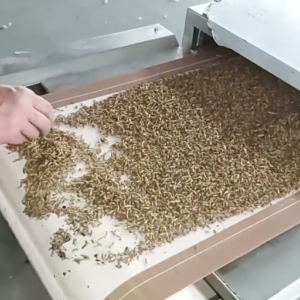
When choosing a suitable industrial microwave for drying larvae, it is essential to consider several issues. To begin with, consider the power output of the microwave; higher levels of wattage make drying faster and thus help to maintain nutritional quality. Then, ensure that the capacity of the microwave is adequate to handle all your larvae processing efforts. Moreover, find devices with moisture checks since they let you dry your larvae optimally without compromising their wholesomeness. Additionally, assess the control mechanisms, ensuring that a microwave permits precise time and power changes necessary for the unique attributes of B. soldier fly larvae. Finally, look into its energy efficiency aspect to ensure sustainability and low running costs in future times.
Key factors to consider when selecting microwave drying equipment
Choosing microwave drying equipment requires considering several important factors that ensure efficient performance and effectiveness:
- Frequency and Wavelength: The drying process’s efficiencies are influenced by microwave frequencies. Thus, selecting equipment operating within a suitable frequency range for your specific drying requirements is critical, as higher ones can be better at heating water in organic substances.
- Uniformity of Heating: Seek equipment that offers even heating to avoid overcooked or undercooked sections in your product. This is necessary for consistent quality, particularly when working with materials with different moisture contents.
- Automation and Control Features: Advanced control systems that allow the programming of drying cycles may enhance usability and consistency in production. Functions such as programmable timers, power settings, and automatic moisture sensing greatly increase operational efficiency.
- Material Compatibility: The drying equipment should be made of materials strong enough to withstand the conditions needed for your particular processes. Sometimes, certain machines are specialized for certain types of organic materials; hence, one must choose machinery based on its intended application.
- Energy Efficiency: Choose models that consume less energy to reduce running costs and environmental impacts. This does not only imply short-term benefits but also aligns with sustainable production objectives.
Thus, by examining these aspects, you can make an informed choice about appropriate microwave drying equipment that effectively meets your production specifications.
Understanding the importance of conveyor systems
Different industries depend on conveyor systems to improve productivity and enhance operations and safety issues. They can help with the easy transportation of materials by doing away with manual handling, reducing workplace injuries. Consequently, they facilitate a smooth flow of activities along the production line by ensuring constant and reliable movement of goods and reducing congestion. Through material transport automation, the speed of production processes can be increased, which entails high output rates and better quality products. Purchasing an effective conveyor system is a critical step for contemporary industries; this ensures proper resource allocation and improves efficiency in operations management.
Where to find reliable industrial microwaves for sale
To find reliable industrial microwaves that are for sale, you can visit the following top sites:
- WebstaurantStore: This is a leading online supplier of food service equipment. It has an extensive range of industrial microwaves specifically designed for restaurants and commercial kitchens. On its user-friendly interface, there are detailed product descriptions and customer reviews to help in making informed buying decisions.
- KaTom Restaurant Supply: KaTom is another reputable source for industrial microwaves, offering a wide range of models from trusted brands. They focus on competitive pricing, provide various financing options, and provide informative resources about the appliances they sell.
- Amazon Business: Amazon’s business section has many sellers offering different models of industrial microwave ovens. The vast selection, Prime shipping convenience, and user reviews make it easy to compare and make decisions quickly.
These websites provide comprehensive information and different choices, making them great starting points when looking for industrial microwaves.
Where can I find more information or contact us with inquiries?
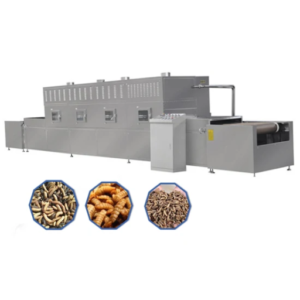
Getting in touch with suppliers
When seeking links to the makers of industrial microwaves, these websites can provide useful resources and methods of contacting them:
- KaTom Restaurant Supply: Visit their website and click on ‘Contact Us’ to send a direct inquiry. They have various contact options, including a phone number or online chat for immediate assistance.
- WebstaurantStore: Visit their customer service page, where you can email or call their support team. During business hours, they also have live chat for instant questions.
- Amazon Business: Although it is essentially a procurement platform, one can communicate directly with vendors via product pages. Usually, the sellers provide their individual contacts, and in case of any orders and supplier requests, you can also liaise with Amazon Business support.
Using these resources will make communication between suppliers more accessible and improve your purchasing process.
Requesting quotes and product demos
Here are the top resources for getting estimates and scheduling demonstrations on industrial microwaves;
- KaTom Restaurant Supply: You can request a quote on their product pages by filling out the inquiry form. Furthermore, their customer service team can create embeddable demos according to your needs or requirements. The quickest response will be given when you contact them through online chat or phone.
- WebstaurantStore: With its extensive inventory, WebstaurantStore has a streamlined method of requesting quotes. Add the items you want into your cart and click the “Request a Quote” option during checkout. They may also organize product trials upon various requests; therefore, engaging with their support team for specialized inquiries is advisable.
- Amazon Business: Although mainly transaction-oriented, one can direct quote requests and possible presentations to sellers on individual product pages. If you’re eyeing bulk purchases, ask for help from Amazon Business Support while negotiating prices and arranging demos if necessary.
Using these platforms makes it easy for quotes and demos, allowing access to information needed to make informed buying decisions.
Exploring customer reviews and success stories
Reading customer reviews and success stories will provide useful insights to help you make intelligent decisions about getting industrial microwaves. The following are the top three sites to read real user experiences:
- KaTom Restaurant Supply: This website has a review section where buyers talk about their experiences with different industrial microwaves. It is possible to get first-hand stories of how well they performed, how long they lasted before breaking down, and whether a buyer was generally happy.
- WebstaurantStore: Customers can leave comprehensive feedback on a variety of products, including commercial microwaves. The website provides filter options based on star ratings that help you quickly identify what most people love best and which is rated highest.
- Amazon Business: Although Amazon is mainly an online marketplace, it provides numerous customer reviews for industrial microwave ovens sold for business purposes. This way, you can get any positive or negative feedback about certain models from those who have already tested them in person, which helps you make an informed choice.
These are just some of the websites where one can find comments regarding reliability and other users’ opinions about different brands of industrial microwave ovens.
Frequently Asked Questions (FAQs)
Q: What is an industrial microwave black soldier fly larva drying machine?
A: An industrial microwave black soldier fly larva drying machine, often termed an industrial microwave dryer, is a specialized equipment for drying and dehydrating BSFL (Black Soldier Fly Larvae). It uses microwave radiation to quickly and efficiently dry larvae while preserving their nutritional value and original color.
Q: How does a microwave drying machine differ from a conventional hot air drying machine?
A: Unlike a hot air drying machine, a microwave drying machine uses microwave radiation to heat and dry materials from the inside out. This results in much faster drying times. Additionally, microwave drying can achieve sterilization more effectively, keeping the final product free from potential contaminants.
Q: What are the energy-saving benefits of using an industrial microwave drying machine?
A: Industrial microwave systems, such as those made by Shandong Loyal Industrial Co., Ltd., are designed to be energy-efficient. Due to microwaves’ targeted heating mechanism, energy consumption is significantly reduced compared to traditional hot air and other drying methods.
Q: Can the industrial microwave black soldier fly larva dryer also be used for sterilization?
A: The industrial microwave dryer can also function as a sterilization machine. The microwave energy dries and sterilizes the BSFL, eliminating harmful bacteria and pathogens and making the larvae safe for pet food or feed production.
Q: What products can be dried using industrial microwave drying equipment?
A: The industrial microwave drying equipment is versatile and can be used for drying insects like BSFL, mealworms (Tenebrio Molitor), and also for other applications such as puff drying for pet food. It’s widely used in feed production and other industrial applications requiring fast and efficient drying and dehydration.
Q: Does the industrial microwave dryer use a conveyor belt system?
A: Yes, most industrial microwave dryers, including tunnel microwave systems, use a conveyor belt to transport the product through the drying chamber. This ensures consistent and uniform drying.
Q: How does the drying temperature in a microwave oven affect the quality of BSFL?
A: The drying temperature in a microwave oven is crucial for maintaining the quality of BSFL. Properly controlled temperatures ensure that the larvae’s nutritional value and original color are preserved. Microwave drying is much faster, which helps retain more nutrients than traditional drying methods.
Q: Are there any specific examples of manufacturers producing these machines?
A: Yes, companies like Shandong Loyal Industrial Co., Ltd. specialize in manufacturing industrial microwave systems for drying and sterilizing insects, including BSFL. Their machines adopt PLC intelligent operating systems to ensure precision and efficiency in drying.
Q: How does the microwave oven’s drying speed compare to traditional methods?
A: Microwave drying is much faster than traditional air or hot air drying methods. This reduced drying time translates to better energy efficiency and productivity, essential for large-scale industrial operations. For instance, microwave-dried insects could be processed a fraction of the time using conventional methods.













